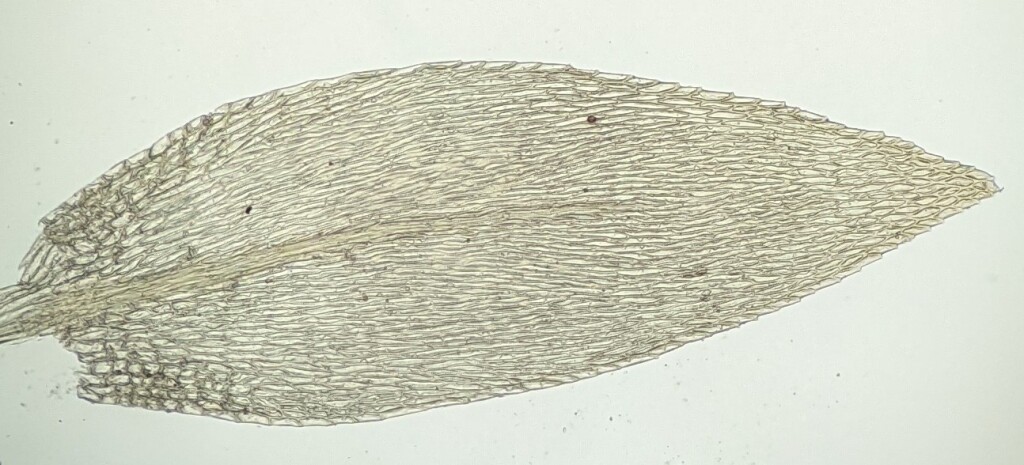Scorpiurium
Autoicous. Asexual propagules absent. Mats on tree bases, often in sites subject to submersion. Stems creeping or ascending, irregularly or pinnately branched, often with curved branches when dry, with scattered sparse fascicles on ventral surface; paraphyllia absent; central strand present. Stem and branch leaves differentiated, erect- to wide-spreading when moist, erect and strongly channelled to almost tubular due to inrolled margins when dry, not plicate; apex rounded, apiculate, obtuse, acute or acuminate; margin entire or denticulate near apex, when moist slightly reflexed at base, otherwise plane; laminal cells linear to rhombic, smooth; alar cells differentiated, extending apically along basal margin, oblate to rectangular. Stem leaves ovate to ovate-lanceolate, arranged around stem and facing all directions or occasionally slightly homomallous; costa extending to the apical half well below apex, sometimes ending in a spine. Branch leaves smaller than stem leaves, elliptic, ovate or lanceolate, arranged around stem and facing all directions or occasionally slightly homomallous or slightly complanate; costa extending to the apical half well below apex, ending in a spine more often than in stem leaves. Seta mamillose or smooth (not in Victoria). Capsule inclined, asymmetric or symmetric, short-cylindric, obloid or obovoid, with an annulus. Calyptra cucullate, smooth, glabrous. Operculum rostrate. Persitome double; endostome nearly exostome height, with a high basal membrane; cilia absent or rudimentary.
Three Eurasian species and a possible fourth species in south-east Australia and New Zealand.
The single Victorian species, S. cucullatum (Mitt.) Hedenäs was transferred to Scorpiurium by Hedenäs (1996), based on its similar leaves, but it is most likely misplaced in Scorpiurium (Ignatov & Huttunen 2002). Scorpiurium belongs to the subfamily Rhynchostegiodeae which all have smooth setae, however, S. cucullatum has a mamillose seta (Ignatov & Huttunen 2002). Ignatov & Huttunen (2002) suggested a more likely affinity of this species with Flabellidium, Helicodontium or Rhynchostegiella, and in their classification opt to include it within Rhynchostegiella due to its close similarity to a group of species surrounding R. sinensis Broth. & Par. However, S. cucullatum may be misplaced in these genera as well given that species included in Rhynchostegiella by Ignatov & Huttunen (2002), and thought to be closely related to R. sinensis, were shown in a chloroplast DNA phylogeny to be only distantly related to Rhynchostegiella (Aigoin et al. 2009). DNA sequences of Scorpiurium cucullatum have not yet been incorporated into phylogenetic studies, which is required to determine the most appropriate placement for this species.
 Spinning
SpinningAigoin, D.A.; Huttunen, S.; Ignatov, M.S.; Dirkse, G.M.; Vanderpoorten, A. (2009). Rhynchostegiella (Brachytheciaceae): molecular recircumcription of a convenient taxonomic repository. Journal of Bryology 31: 213–221.
Hedenäs, L. (1996). Taxonomic and nomenclatural notes on Australian Brachytheciaceae (Musci). Nova Hedwigia 62: 451–465.
Ignatov, M.S.; Huttunen, S. (2002). Brachytheciaceae (Bryophyta) – a family of sibling genera. Arctoa 11: 245–296.


